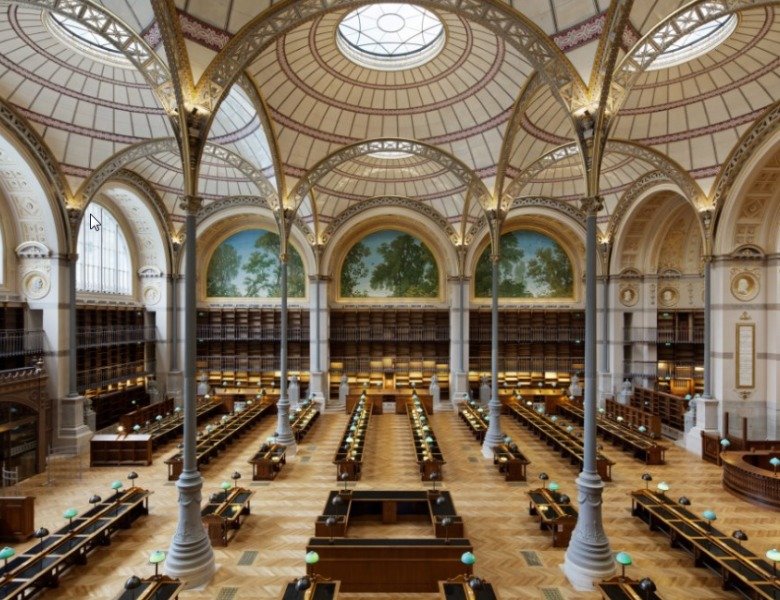LIBRARY SPACES AS PUBLIC INTERIORS
The Library: Interior Urbanism as a Layered Experience of Public Space
Mangold, William. 2024. “The Library,” in Part I: Histories and Typologies, The Interior Urbanism Reader, edited by Gregory Marinic. Routledge.
This scholarship is included as a chapter in the Interior Urbanism Reader, which looks at the interior conditions of urban experience. The chapter challenges the way public space is often represented and interpreted in a binary way: solid/void, public/private. In particular, library spaces are often experienced as environments encoded with varying degrees, expressions, and feelings of “publicness.” The chapter provides a brief history of library spaces, marked by innovation in writing mediums and social developments, and a discussion of the material and atmospheric qualities of library spaces. Considering these library examples, I argue that interior urbanism is characterized by a layered experience of public space, which I theorize in three related registers. 1) Iain Borden’s conception of the urban landscape, understood through skateboarding as “a constant layer through the city,” suggests interior urbanism be considered as a boundary-less condition. 2) The work of William Whyte and ideas of “place” help frame interior urbanism at the scale of human interaction. 3) The idea of “mapping as a generative process,” articulated by both James Corner and Denise Scott Brown, allows us to understand interior urbanism as a way to conceive (or re-conceive) spaces as public.
The chapter draws upon a place analysis study I conducted that looked at the features that define and regulate the space of the New York Public Library to understand and identify how public space is experienced on a continuum from public to private. Particular attention was paid to how architectural elements function to create boundaries and thresholds that shape access and foster specific social behaviors.
Related Projects: Spatial Study of the New York Public Library
Related Materials: Download Manuscript, Download PDF of Presentation









